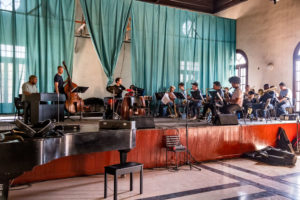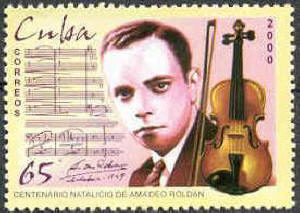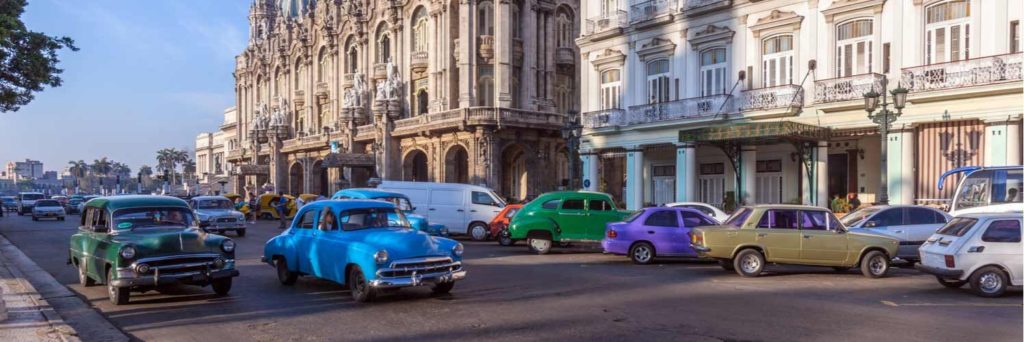AMADEO ROLDAN, NACE EN PARIS POR AZAR, CUBANO DE PURA SEPA.
Pienso en aquel joven mulato, de tez clara y constitución delgada, que vivió apenas dos décadas en su patria en la primera mitad del siglo XIX, cómo vería la Cuba musical de hoy…
Al morir, hace ya 120 años, el asombroso pianista y violinista Amadeo Roldan, dejo a Cuba como herencia total la primicia de haber incorporado a la música clásica instrumentos de percusión afro-cubanos. Su legado al género es infinito.
Cubano de pura música y nacionalidad, nació en Paris por azar, como él mismo contaba, al estar de viaje por esos lares su madre cubana y su padre de origen español. Más de la mitad de su vida la vivió en España donde estudió teoría de la música y violín en el Conservatorio de Madrid, del cual se graduó en 1916 con honores y lauros, aunque hay que agregar que era un excelente pianista. Luego pasó dos años como primer violín en la Orquesta Filarmónica de esa ciudad, y pese a su juventud, recibió el Premio Sarasat, uno de los más codiciados en España para los ejecutantes del violín.
LLEGA A CUBA CON SU GENIALIDAD.
Dos años más tarde, en 1919, la tierra que tanto añoró, lo vio llegar con 19 años y muchos sueños y propósitos. Entre descargas de violín en cabarets y restaurantes habaneros los primeros años para ganarse la vida, fructíferas tertulias con amigos que fue ganando, más estudios, nuevas obras musicales, responsabilidades docentes y musicales, Roldán vivía una intensa existencia, como si previera que el tiempo no le alcanzaría.
En esas reuniones con amigos se unían la cultura y las vanguardias, según decía Roldán. Le contó a un periodista foráneo, que “teníamos almuerzos regulares todos los sábados en el Hotel Lafayette. Después del almuerzo nos íbamos al Café Martí. Recibíamos visitantes ilustres de la vieja guardia como Fernando Ortiz, Juan Antigas, Enrique Roig, y nosotros los “vanguardistas”, como nos llamábamos: Jorge Mañach, Paco Ichaso, Mariblanca Sabas Alomá, Rubén Martínez Villena, Alejo Carpentier, José Manuel Acosta y José Tallet. Son demasiados para recordar”.
Así llegó el joven talento a la Orquesta Sinfónica de La Habana, bajo la batuta de Gonzalo Roig.
Amadeo Roldán fue el iniciador del moderno arte sinfónico en Cuba, el primer músico cubano que incorporó los instrumentos afrocubanos, no como simple acompañamiento, sino como elemento protagónico y constructivo de la obra musical. Fue el primero en representar gráficamente los ritmos propios de esos instrumentos de percusión con todas sus posibilidades técnicas, afirmaban los estudiosos del género.
Roldán gustaba explicar a quienes, dada su formación clásica, se sorprendían de su inclinación a lo afro. “Mi querida madre, Albertina Gardés, tocaba muy bien el piano y tenía una bella voz. Yo le decía “mi sinsonte”. Crecí escuchándola interpretar las contradanzas de Saumell y Robledo y acompañarse ella misma las canciones del “cocoyé oriental” de los negros de Santiago de Cuba.
https://youtu.be/fRU3UByys1c
Su Obertura sobre temas cubanos ha sido llamada “el acontecimiento más importante de la historia musical cubana en aquella etapa del siglo XX”. En la Obertura está Saumell, Espadero, lo negro, el bufo, algo insólito en el género sinfónico cubano, le decían sus homólogos.
“La culpa es de Los Hoyos. De ahí sale el cocoyé santiaguero”, contestaba él. Con una especie de regocijo, al parecer no sólo por la exclusividad, sino por dar espacio a las raíces cubanas, Roldán explicaba: “De la iglesia de Santo Tomás en Los Hoyos sale la primera imagen de la Virgen de la Caridad, porque es la primera iglesia de Santiago de Cuba. Mi madre me hablaba de cuando iba a misa de pequeña con mis abuelos. Luego Emilio Roig me llevó a verla en un viaje que hicimos juntos a provincia”.
Otras composiciones con esa intención le siguieron, como Tres pequeños poemas, Fiesta negra, Rítmicas No. 5 y 6, que junto a Lonisation, fueron las primeas obras sinfónicas sólo para percusión.
Pero ‘La rebambaramba’, está considerada la más famosa de sus partituras, que en aquel entonces trascendió a México, París, Berlín, Budapest, Los Ángeles y Bogotá. Le siguió un ballet sobre un texto de Alejo Carpentier que refleja la vida moderna de la ciudad, entre otras. Y para beneplácito, dirigió en 1935 el ballet Coppelia, en el teatro Auditórium, con Alicia Alonso en el papel de Swanilda.
Entre su abarcador e incansable quehacer cuenta haber sido subdirector de la Orquesta Filarmónica de La Habana; dirigir el Cuarteto de cuerdas de la capital, del cual fue su primer violín, y la Orquesta Filarmónica de La Habana. También fue subdirector del Conservatorio Iranzo y figuró como miembro de la Pan-American Association of Composers.
Su vocación docente, que siempre honró, lo condujo a fundar en 1931 La Escuela Normal de Música de la Habana junto a César Pérez Sentenat. Un año después debutó como titular de la Orquesta Filarmónica de La Habana y para más honores lo eligen director del Conservatorio Municipal de La Habana y Director del Conservatorio de la Filarmónica.
Fue en 1937, que dirigió por última vez la Orquesta Filarmónica de La Habana, debido a su delicado estado de salud por el cáncer que padecía. Falleció en La Habana al año siguiente, el dos de marzo, con sólo 38 años de edad.
AMADEO ROLDAN, FROM PARIS CASUALLY, CUBAN OF PURE SEPA.
I think of that young mulatto, with a fair complexion and thin constitution, who lived just two decades in his homeland in the first half of the 19th century, how he would see the Cuban musical today …
When he died, 120 years ago, the amazing pianist and violinist Amadeo Roldan, left Cuba as a total inheritance the first to have incorporated Afro-Cuban percussion instruments into classical music. His legacy to the genre is infinite.
Cuban of pure music and nationality, he was born in Paris by chance, as he himself counted when his Cuban mother and his father of Spanish origin were traveling in those parts. He lived more than half of his life in Spain where he studied music theory and violin at the Madrid Conservatory, from which he graduated in 1916 with honors and awards, although it must be added that he was an excellent pianist. He then spent two years as the first violin in the Philharmonic Orchestra of that city, and despite his youth, he received the Sarasat Prize, one of the most coveted in Spain for violin players.
ARRIVES IN CUBA WITH HIS GENIALITY.
Two years later, in 1919, the land he longed for so much, saw him arrive with 19 years and many dreams and purposes. Between violin downloads in cabarets and Havana restaurants the first years to earn a living, fruitful gatherings with friends he was winning, more studies, new musical works, teaching, and musical responsibilities, Roldán lived an intense existence, as if he foresaw that time would not catch up with him.
In those meetings with friends, culture and the avant-garde were united, according to Roldán. He told a foreign journalist that “we had regular lunches every Saturday at the Hotel Lafayette. After lunch, we went to Café Martí. We received illustrious visitors from the old guard such as Fernando Ortiz, Juan Antigas, Enrique Roig, and we the “avant-garde”, as we called ourselves: Jorge Mañach, Paco Ichaso, Mariblanca Sabas Alomá, Rubén Martínez Villena, Alejo Carpentier, José Manuel Acosta, and José Tallet. Too many to remember. ”
This is how the young talent arrived at the Havana Symphony Orchestra, under the leadership of Gonzalo Roig,
Amadeo Roldán was the initiator of modern symphonic art in Cuba, the first Cuban musician to incorporate Afro-Cuban instruments, not as a simple accompaniment, but as a leading and constructive element of the musical work. He was the first to graphically represent the rhythms of those percussion instruments with all their technical possibilities, the scholars of the genre affirmed.
Roldán liked to explain to those who, given his classical training, was surprised by his inclination towards Afro. “My dear mother, Albertina Gardés, played the piano very well and had a beautiful voice. I said “my mockingbird”. I grew up listening to her interpret Saumell and Robledo’s contradanzas and accompany the songs of the “oriental cocoyé” of the blacks of Santiago de Cuba.
Her Overture on Cuban themes has been called “the most important event in Cuban musical history at that stage of the 20th century.” In the Overture is Saumell, Espadero, the black, the bufo, something unusual in the Cuban symphonic genre, her counterparts told her.
“The fault lies with Los Hoyos. That is where the cocoyé from Santiago comes from, ”he replied. With a kind of rejoicing, apparently not only due to exclusivity but also to giving space to Cuban roots, Roldán explained: “From the church of Santo Tomás in Los Hoyos comes the first image of the Virgin of Charity, because it is the first church of Santiago de Cuba. My mother used to tell me about when I went to mass as a child with my grandparents. Then Emilio Roig took me to see her on a trip that we made together to the province ”.
Other compositions with that intention followed, such as Three Little Poems, Black Party, Rhythms No. 5, and 6, which together with Lonisation, were the first symphonic works only for percussion.
But La rebambaramba is considered the most famous of her scores, which at that time transcended Mexico, Paris, Berlin, Budapest, Los Angeles, and Bogotá. A ballet followed by a text by Alejo Carpentier that reflects the modern life of the city, among others. And to her delight, she directed the Coppelia ballet in the Auditórium theater in 1935, with Alicia Alonso in the role of Swanilda.
Among his comprehensive and tireless work, he has been deputy director of the Havana Philharmonic Orchestra; direct the String Quartet of the capital, of which he was his first violin, and the Havana Philharmonic Orchestra. He was also deputy director of the Iranzo Conservatory and was a member of the Pan-American Association of Composers.
His teaching vocation, which he always honored, led him to found the Havana Normal School of Music in 1931 with César Pérez Sentenat. A year later he made his debut as head of the Havana Philharmonic Orchestra and for more honors, he is elected director of the Municipal Conservatory of Havana and Director of the Conservatory of the Philharmonic.
It was in 1937 that he conducted the Havana Philharmonic Orchestra for the last time, due to his delicate state of health due to cancer he suffered from. He died in Havana the following year, on March 2, at just 38 years of age.
Agencies/ RadioEncyclop./ Marta Veloz/ Extractos/ Excerpts/ Internet Photos/ YouTube/ Arnoldo Varona/ www.TheCubanHistory.com
THE CUBAN HISTORY, HOLLYWOOD.











